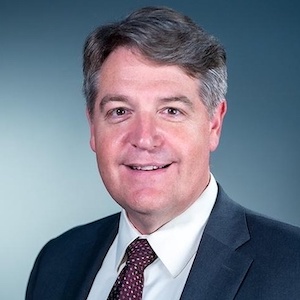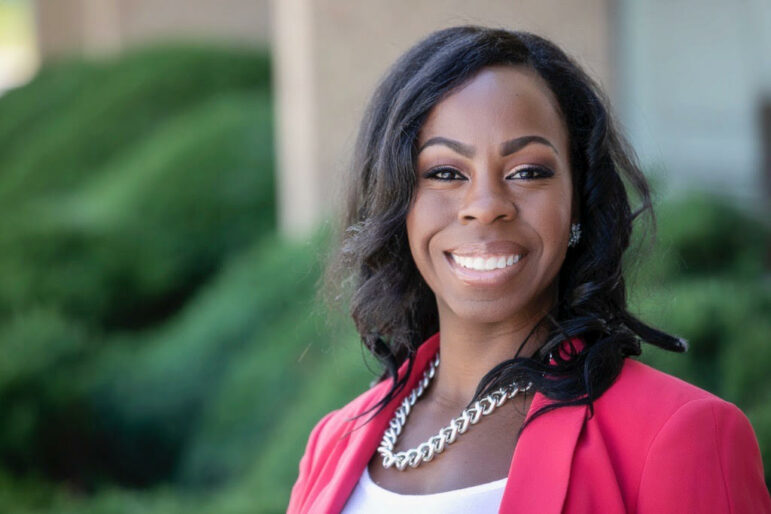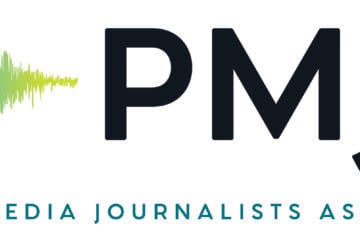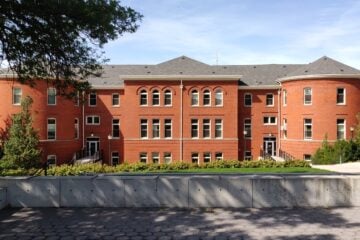How pubmedia is navigating the pros and cons of remote work

jacoblund / iStock
KUNC Executive News Director Sean Corcoran typically starts his workday before even the station’s Morning Edition host. It’s not that he’s an extreme morning person — he just happens to live two time zones east of the station and the rest of the staff. KUNC is in Greeley, Colo., and Corcoran lives in Boston.

“I am able to really dig into the news and pass along the most up-to-date stuff, while also offering [Morning Edition host Nikole Robinson Carroll] edits and other editorial support,” he said.
Corcoran joined KUNC as interim news director in February 2022. He took the gig after nearly five years at GBH, where he’d worked to grow and modernize the newsroom as senior managing editor. He was ready for something new but didn’t want to search for a job while working at GBH.
“When you’re running a big newsroom like that, if word gets out that you’re looking for a job, that just hurts morale,” he said.
The KUNC gig seemed like a great way to bridge the gap. “I had said to [KUNC], ‘Can you just guarantee me six months? I know that’ll give me enough time to look for something.’”

CEO Tammy Terwelp said leaders from other stations called her crazy when she floated the idea of hiring Corcoran on a more permanent basis. She’d then ask them how their news director was working out or how their search for a new one was going.
“Oh, abysmal, we can’t get a candidate. Nobody wants to move, blah blah blah,” Terwelp recalls people saying.
The KUNC newsroom staff loved Corcoran, and the fact that he wasn’t in town didn’t appear to have any impact on his ability to do his job. Terwelp said he’s just as engaged and informed as any news director she’s worked with.
“It’s been amazing,” Terwelp said. “I wouldn’t say, ‘This is the solution.’ I think you have to have the right person, and the team has to trust that person.”
An irreversible shift
The COVID-19 pandemic has fundamentally changed our thinking about remote work and work-life balance. Before the pandemic, many companies expected employees to be on site daily from roughly 9 a.m. to 5 p.m. When lockdowns began in spring 2020, people who had never before considered working from home — such as live radio hosts — found themselves traversing uncharted territory.
By summer 2021, vaccines were widely available to nearly all age groups, and managers in public media and other industries began to consider how and when to bring employees back to the office. A 2021 survey from McKinsey & Company found that the majority of executives across industries expected employees to return to in-person work at least three days a week. One of the primary drivers was a desire to reignite company culture and a sense of belonging among employees. A Reuters Institute study from last year that focused specifically on newsrooms found that about a third of respondents said remote work weakened company culture. At the same time, a third of respondents also reported difficulty getting workers back into the office.
Workers have become accustomed to the flexibility afforded by remote and hybrid work. The McKinsey survey found more than half of workers wanted to work from home at least three days a week. A 2022 survey by Stanford University’s Nick Bloom showed nearly one-third of respondents wanted to work remotely full time, and another third preferred remote work at least two days a week.
A range of approaches
Public media organizations are embracing a wide range of approaches to remote and hybrid work. Some organizations offer maximum flexibility and even have some fully remote workers. Many have set the expectation that people will be in the office two or three days a week, often leaving the details up to department managers.

At joint licensee WGVU in Grand Rapids, Mich., all staffers are expected to be in the station on Tuesdays. GM Jim Rademaker said those days are reserved for interdepartmental meetings and collaboration. The idea is to use the proximity strategically, rather than getting together just for the sake of it.
“There’s no reason to have a bunch of people sitting in the office talking amongst their own team, which they talk with the most already,” Rademaker said. “I want them talking to people they don’t necessarily see all of the time.”
Similarly, PBS has embraced Tuesdays as “community day,” said Mike Jacobson, senior VP of human resources.
“No one wants to walk into the office and be by themselves,” he said. “So we’re intentional about when we’re all in and when we’re not.”

At Louisville Public Media, in-person work requirements are meant to be “functional,” said CEO Stephen George. Workers in some roles, such as engineering, must be on site; the leadership team meets in person once a week. Otherwise, staffers have “maximum flexibility” to work remotely.
“That can be anything from remote or hybrid work to flexible scheduling,” George said. “We try to be accommodating, and I think that approach overall makes us more competitive.”
Other functions also just make more sense for some stations and staffers to designate as in-person. At KUER in Salt Lake City, reporters are required to come into the studio to track features, and development staff often must be in-office when dealing with confidential credit card information.

Rachel Sun, a reporter at Northwest Public Broadcasting, chooses to voice her radio pieces in studio and also makes a point to come in to see colleagues a couple times a week, despite not being required to.
“It helps build a sense of … connection with the people I’m working with,” Sun said. “It also helps with just streamlining some conversations about stories that I’m doing.”
At KUNC, quarterly all-station meetings bring people together, including Corcoran, who flies out from Boston. The rest of the time, employees are welcome to spend as much time in or out of the station as they like. Terwelp said part of that has to do with geography: the station is located in Greeley, Colo., while many staffers live 30 to 60 miles away in Ft. Collins, Boulder or Denver.
“I just thought, this is so ridiculous. I’m gonna make people drive an hour in rush hour on a highway that’s perpetually in construction to come in and say ‘Hi’ and then go back to Denver, or go to Fort Collins or go to where the reporting is?” Terwelp said. “Just be an adult. Do your work. I’m not going to monitor you.”
While KALW in San Francisco does require most staffers to be in office half-time, “there have been enough exceptions that it’s not heavily enforced,” said Interim Executive Director Ben Trefny.
In fact, of the more than a dozen public media organizations Current interviewed for this story, none has a strict blanket requirement that all staffers work on site a minimum number of days each week.
Challenges and opportunities
Managers point to a wide variety of benefits of hybrid work — flexibility for employees, improved productivity and competitiveness as an employer — but also see drawbacks, including difficulty collaborating, challenges onboarding new employees and an extra load on managers.

A recent employee survey at Georgia Public Broadcasting found high rates of job satisfaction, said President Bert Wesley Huffman.
“About 97% of employees [are] happy with the decisions that leadership is making about their health and about their jobs,” Huffman said. “These were just unbelievable numbers that were flowing into us.”
Workers at GPB and other public media organizations are free to manage their time in ways that make sense for their lives. People don’t necessarily have to spend time commuting, and they can work in the place that’s most conducive to getting their work done. For High Plains Public Radio reporter David Condos, that means working from home.

“It helps me focus,” Condos said. “When I have worked from the studio, either the HPPR studios in Garden City or from the KCUR studios in Kansas City … I feel this shock and it’s kind of hard to work when there [are] all these other distractions around.”
Furthermore, reporters and managers alike appreciate that the hybrid model gives reporters and producers more time to spend in the community.
“I would rather reporters be out in the field or [at the state capitol], and if they can launch off to an interview better from home than they can from work, then I want them to do what makes the most sense for the workflow,” said KUER News Director Elaine Clark.
For NPR, remote work affected not only workflow but also content and editorial choices, said Legal Compliance Specialist Catie Merino, who managed the network’s Future of Work program, an organization-wide visioning and policymaking effort. No longer tied to D.C., Los Angeles or New York City, some NPR journalists fanned out across the country to stay with family or for a change of scenery.

“The way that people talked about the topic of the day was a little bit different in different parts of the country,” Merino said. “It broadened their perspective of how regular Americans, who are our target audience, were talking about news.”
NPR now has employees in more than 40 states, the most in its history.
Organization leaders say the option to work remotely makes them more competitive as employers, particularly for hard-to-fill roles like software development and information technology.

“When you look in the market for those types of positions … a majority of them are positions that work remotely and from any state,” said LaToya Linzey, senior VP of people and culture at Colorado Public Radio. “It had been very challenging for us to fill those types of positions internally in our organization because of what’s happening in the market.”
At PBS, positions are classified into three categories: those that can be fully remote, those that are hybrid and those that require a full-time in-office presence, Jacobson said. Having some employees remote while others are in person can create challenges for communication and collaboration, so PBS has spent significant resources training people to use technology to bridge the gap.

“It’s one thing when everybody is remote,” he said. “But now, when some people are in and some people aren’t, I don’t want to assume people know the best ways of using technology, making sure we’re not leaving people behind.”
Often, this places more of a load on managers to coordinate the work of their teams. KALW has tried to build more lead time into its workflows to allow for the communication inefficiencies that can creep into a hybrid workplace.
“People just have to be more attentive to how the system can fall apart if people don’t hit their deadlines,” said Trefny. “It’s easier when you’re all in person … because you could have a manager bugging somebody and reminding them. That’s harder to do digitally.”
The challenges for managers go beyond logistics, however. At CPR, surveys have shown that some employees “don’t feel as connected or as engaged because they don’t have as many touchpoints with employees in person,” said Linzey.
Bridging the disconnect requires managers to think of themselves more as coaches than bosses, according to research from Gallup, and to help staffers see their daily work as connected to the larger organizational mission.
“That feeling of connection is still really important. Hybrid can be that kind of sweet spot where you have flexibility, but also, you’re not isolated,” said Moss Bresnahan, executive director of Illinois Public Media in Urbana. “One of the challenges, I think, is that it requires a deliberate effort to maintain that connection.”
Building culture in a hybrid environment
A 2022 Gallup analysis found that hybrid workers are more likely than either fully remote or fully in-person workers to say they feel connected to their company. The reason, researchers conclude, is that leaders in these hybrid work spaces approach both in-person and remote work with more intentionality. It’s intentionality, not proximity, that builds company culture.
For public broadcasters, that means thinking and acting strategically in every area, from how space is used to how meetings are run to how new employees are mentored. It also means asking what really matters to their organizations: What are their values, and how do they live them in ways both big and small?
For KALW, it was important to bring back their softball team after a couple of years off due to the pandemic. “We lose all our games by about 20 runs,” said Trefny. “Everybody really enjoys it.”
Colorado Public Radio got hotel rooms for out-of-town employees so they could enjoy the staff holiday party in Denver; food trucks visit KUER on Tuesdays. Ideastream provides parking and lunch subsidies for employees to help defray the cost of coming into the office.
Many organizations are focused on using everyone’s time more wisely. Louisville Public Media banned internal meetings on Fridays, and CEO Stephen George told everyone in leadership to reduce their time spent in meetings by 10%. When they do have meetings, “make them action-oriented,” he said. “Which can be challenging sometimes. It’s a work in progress.”
As the Gallup research suggests, hybrid work can actually bolster, rather than diminish, an organization’s culture. The flexibility offered by a hybrid model can make employees feel more trusted and more empowered to work in the ways that best suit them.
“It really has sort of realigned the idea of productivity toward you. What is the output as opposed to how often are you here or how reliably are you in the building?” said Huffman of GPB. “Those are literally things that would’ve been a part of a review for an employee before the pandemic.”
Managers identified this as a significant philosophical shift, especially when compared to decades ago when many of them started in public broadcasting. It’s a recognition of the importance of work-life balance in keeping employees happy and productive.
“That used to be throwing parties in the office and having free coffee and all those kinds of things,” said GPB’s Huffman. “Now maybe that is giving them the flexibility to be able to live their lives and do their jobs at the same time.”
Merino of NPR said she received a note from a staffer who was able to move home to care for aging parents without losing her job.
“That’s why it’s worth kind of toiling to get this right,” she said. “Because when you get it right, it is hugely impactful for people.”
That doesn’t mean it’s an easy change to make, even for workers themselves.
“There’s still an internal pressure that I kind of put on myself, especially when I am working around other people all the time to … perform busyness, which isn’t the same as productivity,” Sun said. “It’s hard to separate those two sometimes just because I feel like [people have] had a lot of conditioning … to appear as if they are ‘doing work,’ even if they would be more productive if they took little breaks and they went and did something else for a bit.”
Overall, workers and managers alike see more benefits to hybrid work than drawbacks, and they recognize that the full-time in-person workplace is a thing of the past. Because public media tends to self-select for mission-driven people who are there for more than just a paycheck, managers across the system appear optimistic about the potential to grow organizational culture in a hybrid workplace.
“Feeling connected is not just about physical proximity,” said IPM’s Bresnahan. “It’s about this mutual connection to the mission. It’s a bond from a feeling of teamwork. It’s a feeling of being heard and understood. I think those things are really important to emphasize in an environment where there’s hybrid or remote work.”






